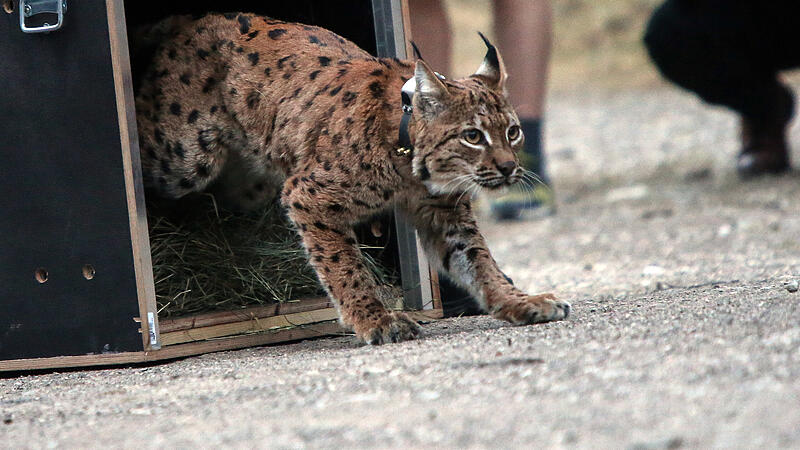Image: VOLKER WEIHBOLD

Image: VOLKER WEIHBOLD
More than 100 lynx regularly roam the area in the three-country corner of Bavaria, the Czech Republic and Upper Austria and are constantly in the habitat around the Bohemian Forest and the upper Mühlviertel. In the Kalkalpen region, however, the lynx project continues to be complicated by factors: While it used to be poaching, the local population has been suffering from a lack of reproduction for years. The last time there were offspring was in 2018. Now the dominant lynx “Lakota”, which is considered incapable of reproduction, is to be captured.

Image: VOLKER WEIHBOLD
“I would like to continue to work on the project in the Kalkalpen area. But ‘Lakota’ is so dominant that the new young lynx ‘Norik’ has no chance,” says nature conservation officer and deputy state governor Manfred Haimbuchner (FP). The plan is to capture the lynx in order to resettle it in another region. But catching them turns out to be more difficult than expected. The trap to catch the lynx has been in operation since December 2023, and further attempts to catch the lynx will be made until the end of March. The long-term goal of the project: to establish a self-sustaining population of 20 to 30 animals.
Good state of preservation with beaver population
Upper Austria’s nature conservation officer named the beaver as another successful species protection project: In 1989, the beaver population in the country was estimated at only 35, in 2023 the number was around 2,200 animals spread over 735 territories. The number of beavers has almost tripled in the past ten years. However, this would lead to increased conflicts between the individual animals themselves and damage to agriculture.
“The beaver is no longer endangered, but is in a good state of conservation,” says Haimbuchner, criticizing the lack of flexibility at EU level with regard to the Fauna-Flora-Habitat Directive (FFH). The aim of nature conservation is to value endangered species and populations as a whole and not individual individuals. The conservation status of beavers is particularly good in the continental region; according to Haimbuchner, removal could also be considered from a conservation perspective in the form of a beaver regulation.
My themes
For your saved topics were
new articles found.

info By clicking on the icon you can add the keyword to your topics.
info
By clicking on the icon you open your “my topics” page. They have of 15 keywords saved and would have to remove keywords.
info By clicking on the icon you can remove the keyword from your topics.
Add the topic to your topics.
Source: Nachrichten




